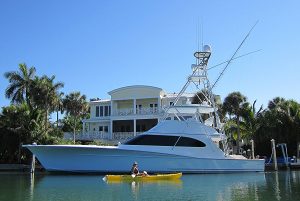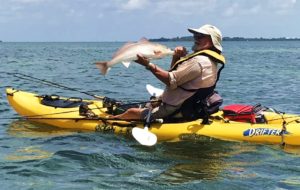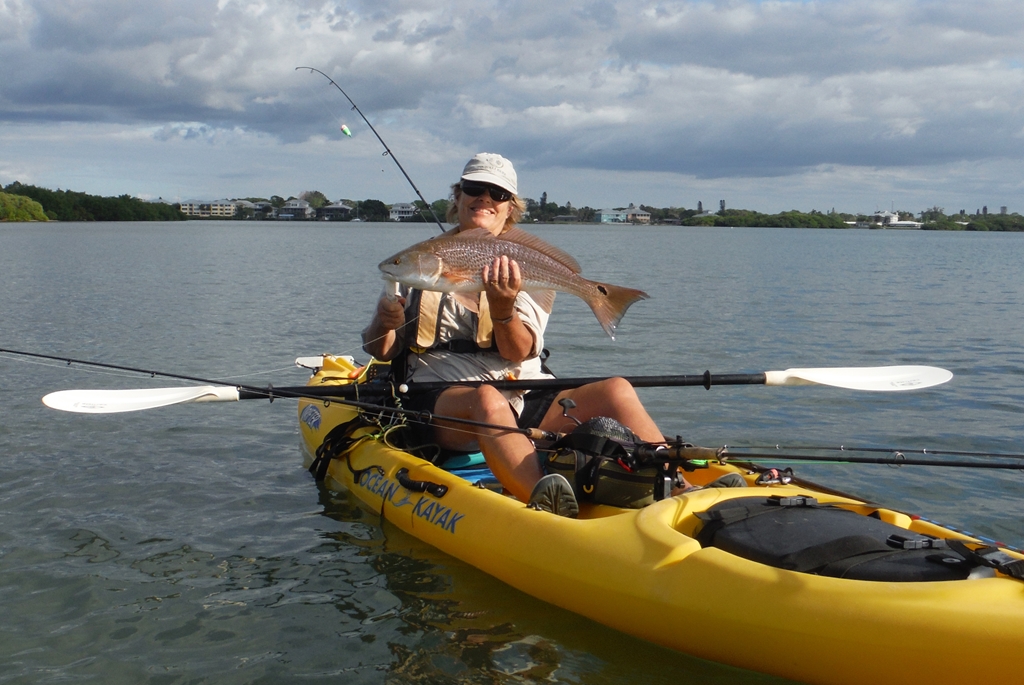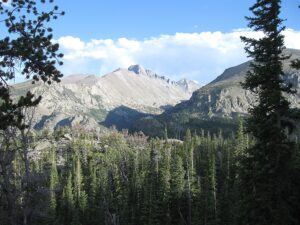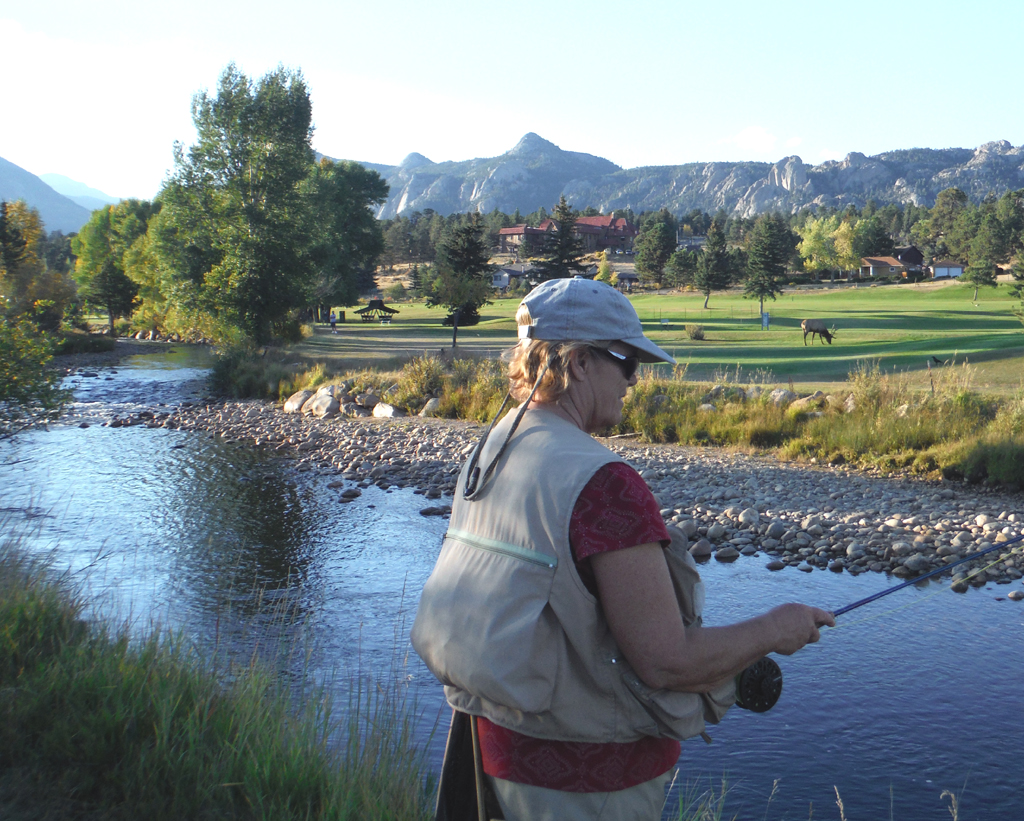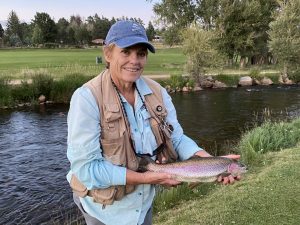Fishing blog: Tales of angling adventures from around the world
Welcome to our fish blog! Here you can read more sage advice from anglers around the world. This is the place for news, tips and non-fiction fish tales from mountain lakes to distant beaches. Please feel free to comment and join in on the conversations and share some fish tales of your own!
Yesterday, we hiked to a couple of lakes we haven’t fished in a while. Starting at the Bear Lake Parking Lot, [9,449 ft.] we took the shortcut trail up to Nymph Lake. This old trail follows the path of the pipeline between the upper cistern and the old Bear Lake Lodge. Though shorter, this steep path is difficult hiking and is unmaintained with lots of loose rock.
This shortcut trail joins the main trail at Nymph Lake. Nymph is a barren shallow lake and freeze-kills every winter. From here the trail heads steadily upward to Dream Lake [9,900 ft.] Though populated with hybrid greenback cutthroat trout, we rarely fish there due to the number of visitors that enjoy this lake, only 1.1 miles from the parking lot. We made a few casts and caught a few trout, but later in the afternoon, as weather threatened, we left.
Approaching Dream Lake the trail to Lake Haiyaha [10,220 ft.] climbs along a traverse above Dream Lake. Some of the most spectacular views of Mills Lake and the west side of Longs Peak are found here. From these overlooks, the trail descends to Lake Haiyaha, crossing Chaos Creek, named for the glacier at the upper end of Chaos Canyon, above the lake. This canyon was the scene of a massive landslide earlier this summer which caused the crystal clear water in Lake Haiyaha to become cloudy and take on a Jade green color. We were curious about the cutthroat population there but while fishing the outlet stream we found a few feeding fish. The main trail ends in a boulder pile by an ancient limber pine. If you plan to fish Haiyaha, we find water access is better by bushwacking up the north side of Chaos Creek to the lake. We’re plan to check it out again next summer after some of the glacial till has settled.
We’re glad we went when we did as a cold front arrived last night bringing temperatures in the 40’s today with more rain forecast for the weekend. We had a beautiful day in the high country and both of us released trout but, as usual, Kim caught more.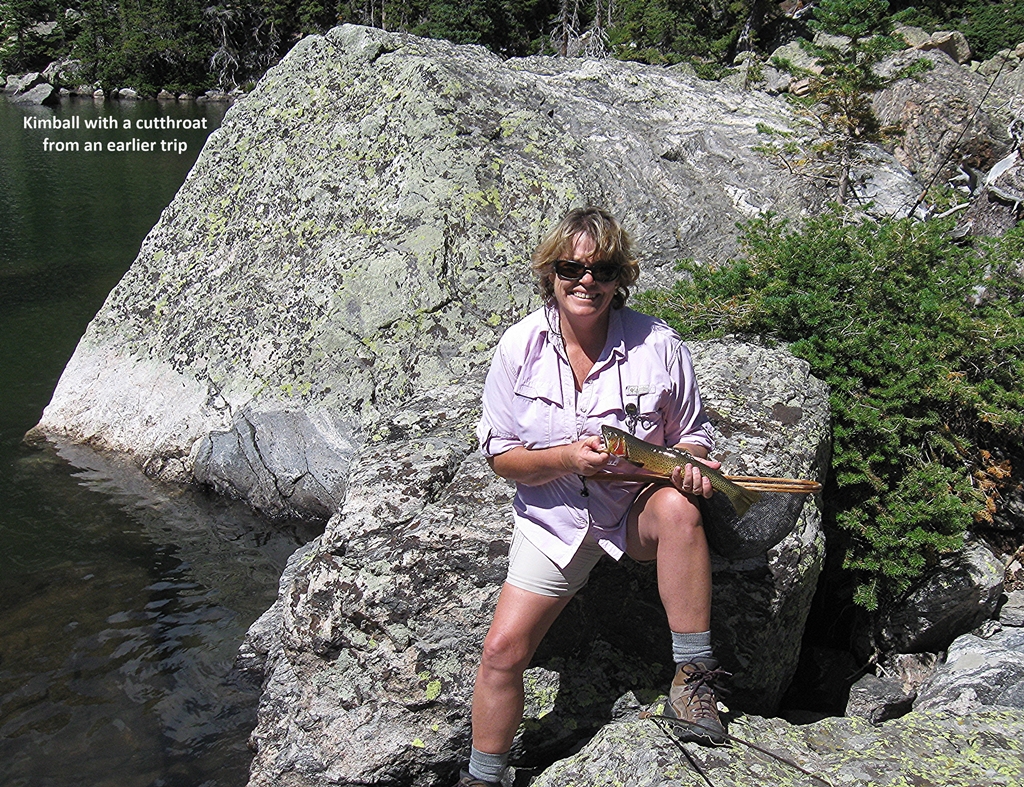
It’s Here! The elk rut or mating ritual has begun. Visitors from around the world arrive to see bull elk lock antlers to determine which is the strongest. The biggest bulls end up with the most cows to service.
It is also a great time of year to float a dry fly on the Big Thompson as it flows through the nine-hole golf course. We only fish this stretch of river after the golfers have retired for the day. The half hour before and after sunset is prime time. We quit when we can’t see our flies.
Of course, care must be taken to stay away from bull elk as they interact with their herd and other bulls. Never get between a bull and a cow elk. This time of year, their hormones take over and they have been known to charge cars and even statues of elk.
Terrestrials are the ticket these days. Grasshoppers, ants, flying ants, and beetles top the menu, but parachute Adam’s or a dragging caddis pattern will also get their attention. Look out for visiting elk watchers, they don’t realize fly casters need to back cast and will stand right behind you. Barbless flies make releasing them easier.
Last year it was fires, this year it is floods, particularly flash floods from the burn scars. Between the charcoal-tinted water and warming temperatures, our trout streams are becoming too hot for trout.
If you fish Colorado waters for trout, check the temperature first. Water temperatures above 70 F hold little oxygen and anglers can stress fish. Put away your 1 and 3 weight rods in favor of something that will bring your fish to net
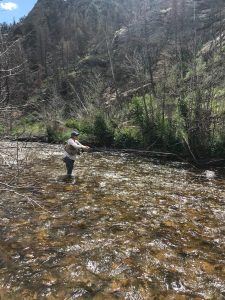
 before a quick release. Keep them in the water and send them on their way alive and frisky.
before a quick release. Keep them in the water and send them on their way alive and frisky.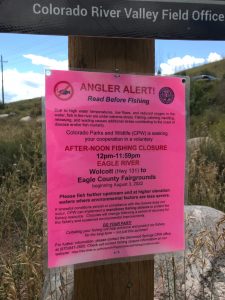
We just spent a few days near Walden, Colorado at Delaney Buttes chasing larger rainbows and browns. The fishing there is usually done from belly boats, but we do well casting from the shore. The bugs were fierce, but the fishing was good enough to keep them tolerable. Here’s a picture of the lakes and our camper. Also images of rainbows Kimball landed with her 5 wt. We both got well into our backings and were broken off on big fish we couldn’t stop…in a lake! They just burrowed into the hydrilla and kept going. I netted some good ones too. That’s an 18” net she is holding that fat 19” rainbow 
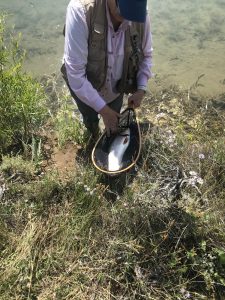
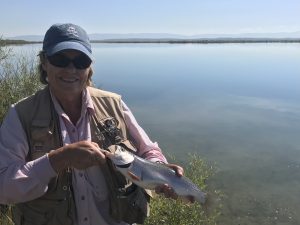
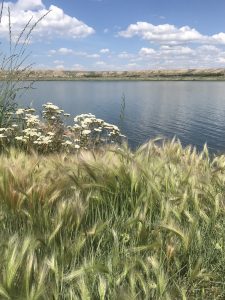 in.
in.

